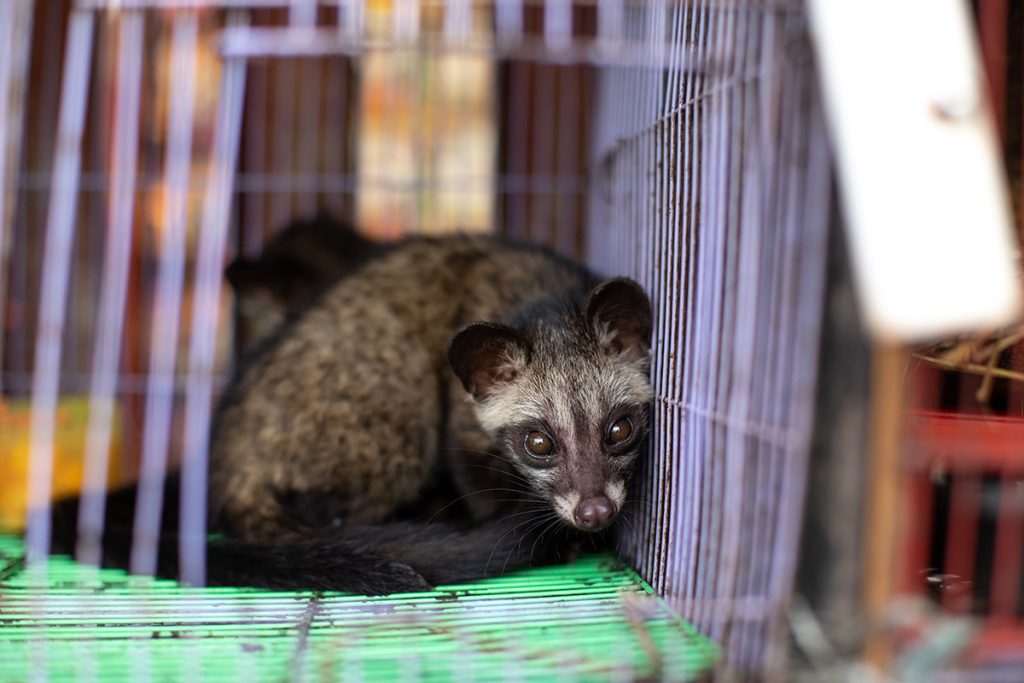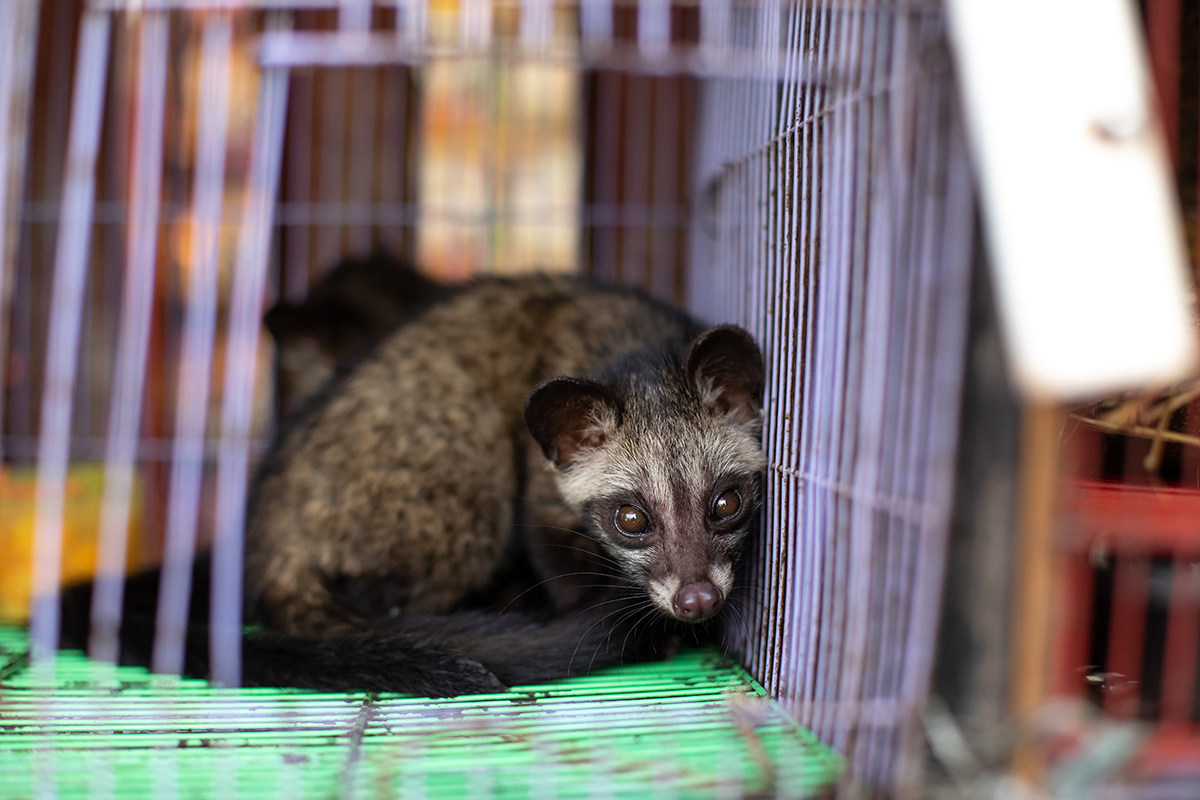Wildlife trade poses health threats to humans, but Chinese wildlife farms are profiting


A baby civet at a wildlife market
Credit Line: World Animal Protection / Aaron Gekoski
In November 2021, scientists from various disciplines published a “warning to humanity” on wildlife trade because of the risk of “diseases transmitted from wildlife to humans.”
As COVID-19 swept across China last year, the Beijing government closed the live-animal sections of numerous markets and shut down 20,000 wildlife farms across the country. Unknown to the outside world, however, three-quarters of the sector’s value comes from breeding animals for fur, traditional medicine and entertainment purposes. Many of those wildlife farms are still in business.
These wildlife farms have become a focal point in the search for the origins of COVID-19, and a touchy issue for the Chinese — so much so that Beijing barred researchers, who were part of a mission organized by the World Health Organization (WHO), from visiting wildlife farms and bat caves in southern China.
Active sites
In late 2020, researchers at the Belgium-based Humane Society International (HSI) visited 13 fur farms across China. The researchers found that not only were animals still being killed, but that no measures were being taken to prevent the spread of COVID-19:
“The fur farms we visited did not follow health and safety regulations,” says Wendy Higgins, director of international media at HSI. “Epidemic control rules were breached and our investigators were welcomed to the farms without having to follow basic biosecurity measures like disinfection stations at entry and exit points, wearing safety clothing, and having a quarantine area for ill animals,” says Higgins.
In March 2021, the WHO concluded that the novel coronavirus was most likely transmitted to humans through an “intermediary” rather than through direct infection by bats, packaged food or a laboratory accident.
The WHO researchers identified mink, civets and raccoon dogs as possible “intermediary host species,” with mink being “highly susceptible” to COVID-19. While the focus so far has been on the risk posed by humans consuming meat from these animals, the WHO report notes that direct contact with infected animals or their body waste can also spread the virus.
Livestock or wildlife?
Concerns about these animals’ role in spreading COVID-19 have been fuelled by outbreaks at 431 mink fur farms across Europe and North America.
Denmark and Poland, the world’s top two fur-producing countries after China, have temporarily banned mink farming because of COVID-19 concerns. British Columbia will phase out mink farming by 2025, and France recently banned mink farming.
China farmed an estimated 14 million foxes, 13.5 million raccoon dogs and 11.6 million mink in 2019. But rather than ban fur farming, the Chinese government classified mink, foxes and raccoons as livestock, explicitly excluding them from the wildlife ban.
“Virologists are concerned the virus can lay dormant at fur farms. The virus is capable of mutating so as we develop vaccines, new variants can emerge that are resistant. To leave such a potential threat untouched, just to boost the world of fashion, seems a far too great risk,” says Higgins.
In May 2020, Chinese authorities offered buyouts to farmers who raise wildlife for food, but the same incentive was not offered to fur farmers. Recent data is hard to come by, but in 2016, fur farming was valued at an estimated 389 billion Chinese yuan (US$55 billion), as opposed to only 125 billion yuan (US$17 billion) for wildlife food production.
Luxury and profits
As a result of the closure of fur farms in other parts of the world, Chinese producers experienced a price hike of 30 per cent in December 2020.
Wildlife is considered a luxury product affordable only to a small but growing segment of consumers. A World Wildlife Fund survey found that in China, 10 per cent of respondents had purchased wild animals at an open market in 2019.
Worryingly, scientists found that banning wildlife markets has “not discouraged online wildlife trade.”
Besides food and fur, wild animal parts are also used in traditional Chinese medicine, a growing market actively promoted by the government. Chinese consumers were expected to spend US$420 billion annually on these items by the end of 2020.
China legalized the use of rhino horn and tiger bone in traditional medicine in 2018. It went further last year with a law criminalizing any public criticism of traditional medicine. More recently, the government started promoting the use of traditional medicine to cure COVID-19 without any evidence to that effect.
Mitigation and policy
The government’s policy towards wildlife farming echoes its actions during the SARS outbreak in 2003. It initially shut down wildlife markets when the disease was traced to animals, but after two years, enforcement “lessened as the wildlife trade industry lobbied against it and pointed out the economic and job contributions to the country.”
The WHO continues its search for the definitive origin of COVID-19. It recently announced the formation of a scientific advisory group to further the investigation, and has recommended conducting “targeted surveys of fur farms” as one line of inquiry.
Despite close encounters with Ebola, SARS-CoV-1, Middle East Respiratory Syndrome and H1N1, and decades of warnings from infectious diseases specialists, stricter regulation and additional mitigation strategies are needed.
This article is republished from The Conversation under a Creative Commons license. Read the original article.
Source: www.canadianmanufacturing.com

